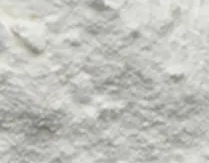Calcium citrate is a chemical compound, the inorganic salt of citric acid (α and β-hydroxytricarboxylic acid). Calcium carbonate or calcium hydroxide is generally used for production. It is found in all living organisms and is part of cell metabolism. In the plant kingdom, it is found in quantities in citrus fruits, strawberries, kiwis.
Industrial production of citric acid takes place by mycological fermentation of raw sugar from Aspergillus niger and subsequent crystallisation with alkaline solutions.
The name describes the structure of the molecule.
- "Calcium" is a chemical element with the symbol Ca and atomic number 20.
- "Citrate" refers to the citrate anion, which is derived from citric acid, a weak organic acid found naturally in citrus fruits.
The synthesis process takes place in several stages:
- Step 1: Preparation of raw materials: calcium carbonate or calcium hydroxide and citric acid.
- Step 2: Reaction. Calcium carbonate or calcium hydroxide reacts with citric acid in an acid-base reaction, in which citric acid gives a proton (H+) to calcium carbonate or calcium hydroxide, forming water and calcium citrate.
- Step 3: Crystallization. The resulting calcium citrate is crystallized by the solution by cooling the solution, which decreases the solubility of calcium citrate, causing it to precipitate out of the solution.
- Step 4: Filtration and drying. The precipitated calcium citrate is then filtered from the solution and dried to remove residual water
It appears in the form of a white powder.

What it is used for and where
Cosmetics
Buffering agent. An ingredient that can bring an alkaline or acid solution to a certain pH level and prevent it from changing. in practice a pH stabiliser.
Food
In the list of food additives it has the number E333, it acts as a buffer to improve the consistency of foods and is divided into:
- E333 (i) Monocalcium citrate
- E333 (ii) Dicalcium citrate
- E333 (iii) Tricalcium citrate
A typical application of calcium citrate is the addition of hydroxyapatite or calcium citrate nanoparticles to toothpastes to improve their adherence to dentin without any pretreatment (1).
Calcium citrate studies
This substance is used in the following products: adhesives and
- sealants
- adsorbents
- air care products
- biocides
- disinfectants
- foodstuffs
- pest control products
- coating products
- fillers
- putties
- plasters
- modelling clay
- fertilisers
- inks and toners
- pH regulators
- water treatment products
- laboratory chemicals
- perfumes and fragrances
- photo-chemicals
- polishes and waxes
- textile treatment products and dyes
- washing & cleaning products
- water softeners
- water treatment
- chemicals
- cosmetics
- personal care products
Molecular Formula: C12H10Ca3O14
Linear Formula: Ca3(C6H5O7)2 · 4H2O
Molecular Weight: 498.432 g/mol
UNII: 86117BWO7P
CAS: 813-94-5 5785-44-4 12405-04-8
EC Number: 212-391-7
PubChem Substance ID 329752082
MDL number MFCD00150786
Beilstein Registry Number 3924520
Synonyms:
- Tricalcium dicitrate
- E333
- Acicontral
- Tribasic calcium citrate
- Calcitrate
- Citracal
- 1,2,3-Propanetricarboxylic acid, 2-hydroxy-, calcium salt (2:3)
- Calcium 2-hydroxy-1,2,3-propanetricarboxylate (3:2)
- 2-Hydroxy-1,2,3-propanetricarboxylic acid calcium salt (2:3)
- Calcitrate
- tricalcium 2-hydroxypropane-1,2,3-tricarboxylate
- Lime citrate
- tricalcium citrate tetrahydrate
- Citrical
- Calcium citrate, tribasic
- calcium 2-hydroxypropane-1,2,3-tricarboxylate (3:2)
- 2-hydroxy-1,2,3-propanetricarboxylic acid calcium salt (2:3); tricalcium citrate
References_____________________________________________
(1) Sereda G, Saeedi S. Pre-treatment of dentin with chondroitin sulfate or L-arginine modulates dentin tubule occlusion by toothpaste components. Sereda G, Saeedi S. Am J Dent. 2019 Apr;32(2):81-88


